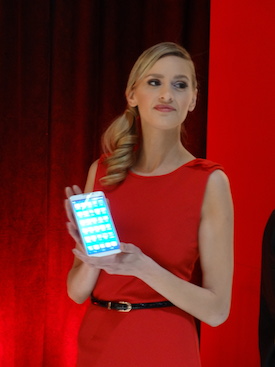
Absolutely phablet.
“We are the number three smart phone manufacturer in the world”, declared Colin Giles, executive vice president of Huawei’s consumer business group. “We’re moving more into a connected world, and the center of the connected world is the smart phone”.
Huawei splashed out at CES this morning with a tightly produced press conference where two overarching messages came through clearly: mobile products drive the consumer electronics industry – neither Giles or CEO Richard Yu talked about anything else – and Huawei intends to build a global brand on top of its mobile products and technology.
“95% of the products we ship worldwide have the Huawei brand on them”, said Giles, underscoring their successful transformation from a maker of products for other companies to a mobile and consumer electronics brand with growing recognition worldwide – more than doubling from 25% awareness amongst global consumers in 2012 to 53% in 2013. In 2014, “it’s going to be all about brand, we need to commit to developing our brand”.
Besides phones and related consumer products, Huawei also makes mobile telecoms infrastructure, claiming to have built 10% of the world’s LTE networks, including nearly half deployed in major cities. It’s diversifying within the mobile ecosystem, rather than across consumer electronics product lines. That’s a smart strategy, given that smart phones and tablets account for close to half of global consumer electronics sales by value and other product categories are slipping. As mobile devices take on more and more of the functions of computers, televisions and other CE products, diversification will happen organically.
Huawei might be the third ranking smart phone maker, but it’s only just edging out Lenovo and LG for leader of the 5% share club. It has a long way to go to get into Samsung’s and Apple’s league. But strength in China and experience in other developing markets, where most of the growth in consumer electronics sales will be, gives Huawei a plausible chance of getting there.
